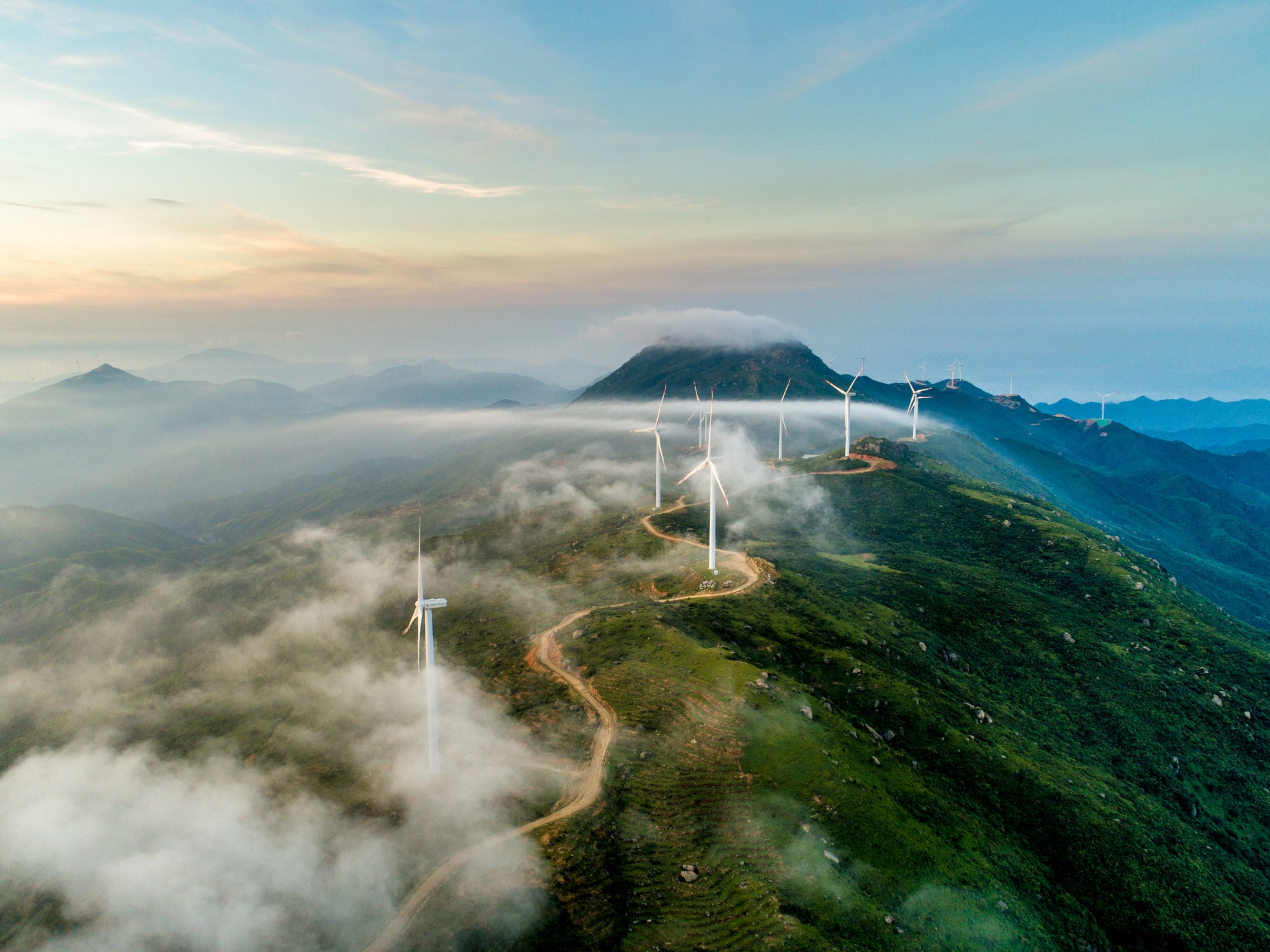World ‘nearing peak fossil fuel demand’ as wind and solar power take over
Renewables rapidly cutting bills and emissions around the world, analysis finds

Your support helps us to tell the story
From reproductive rights to climate change to Big Tech, The Independent is on the ground when the story is developing. Whether it's investigating the financials of Elon Musk's pro-Trump PAC or producing our latest documentary, 'The A Word', which shines a light on the American women fighting for reproductive rights, we know how important it is to parse out the facts from the messaging.
At such a critical moment in US history, we need reporters on the ground. Your donation allows us to keep sending journalists to speak to both sides of the story.
The Independent is trusted by Americans across the entire political spectrum. And unlike many other quality news outlets, we choose not to lock Americans out of our reporting and analysis with paywalls. We believe quality journalism should be available to everyone, paid for by those who can afford it.
Your support makes all the difference.The world is nearing a “tipping point”, at which we will hit peak fossil fuel power generation, and all future demand is met by renewables, particularly wind and solar power, new analysis shows.
According to energy think tank Ember, which carried out the analysis, electricity demand around the world rose by 3 per cent in the first half of 2022 compared to the same period last year – a figure in line with the average annual rise in demand.
Wind and solar met 77 per cent of this demand growth, and hydro-electric projects more than met the remainder. In China, the rise in wind and solar generation met 92 per cent of the country’s electricity demand rise. In the US it was 81 per cent and in India, it was 23 per cent.
However, despite the halt in fossil fuel power generation in the first half of 2022, coal and gas production increased in July and August. The year could also end up with a new record set for greenhouse gas emissions produced by the energy sector.
The analysis – which only goes as far as August this year – found the surge in gas and coal usage occurred because record droughts meant China’s former surplus of hydro-electric power turned into a deficit, requiring the country to turn to fossil fuels, while heatwaves around the world pushed up electricity demand more widely.
Malgorzata Wiatros-Motyka, senior electricity analyst at Ember, said: “Wind and solar are proving themselves during the energy crisis. The first step to ending the grip of expensive and polluting fossil fuels is to build enough clean power to meet the world’s growing appetite for electricity. We can’t be sure if we’ve reached peak coal and gas in the power sector.
“Global power sector emissions are still pushing all-time highs when they need to be falling very quickly. And the same fossil fuels pushing us into a climate crisis are also causing the global energy crisis.
“We have a solution: wind and solar are homegrown and cheap, and are already cutting both bills and emissions fast.”
The amount of global energy produced by renewables increased by 416 Tera-watt hours, slightly exceeding the growth in global electricity demand of 389TWh.
In total, renewables generated 28 per cent of global electricity in the first half of 2022 (3,802 TWh), up from 26 per cent (3,387 TWh) in the same period last year.
Compared to last year, wind generation rose by 175TWh (19 per cent) globally in the first half of 2022, while solar increased by 125TWh (25 per cent).
In total, solar generated 5 per cent of all global electricity in the first half of 2022 (619 TWh), while wind generated 8 per cent (1,102TWh).
The researchers said the figures show the world is plotting a course to the point that the rise in clean power meets all the rise in electricity demand, therefore halting the rise in fossil fuels in the power sector.
“This has happened twice before – in 2015 and 2019 – which were both years of below-average demand growth,” they said.
“The rises in July and August make it less likely it will happen in 2022, but it will certainly be close.
“As wind and solar add more generation every year, that tipping point gets closer. However, electricity demand growth will also be increasing, as electrification of heating, transport and industry picks up this decade, meaning we will need even more clean electricity every year.”



Join our commenting forum
Join thought-provoking conversations, follow other Independent readers and see their replies
Comments